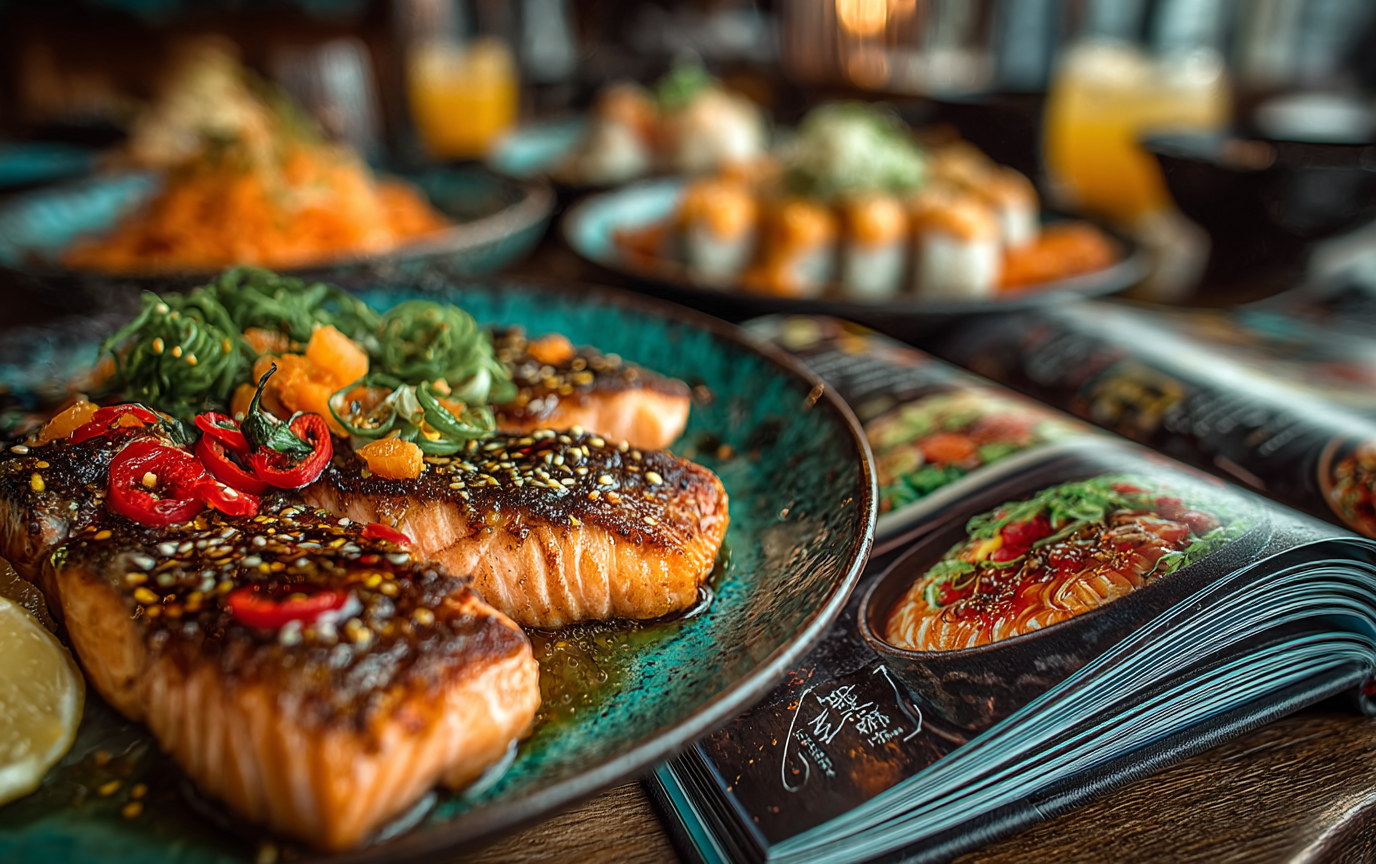Traveling can often feel like stepping into a storybook; each destination is another blank page waiting to be filled with unforgettable adventures. Yet, amidst the thrill of exploration lies a common hurdle that can catch even the most seasoned travelers off guard—foreign menus. Imagine sitting down at a quaint café in Paris, the fragrant aroma of freshly baked bread wafting through the air, as your eyes scan the menu filled with intricate French terms. You’re excited but also slightly overwhelmed. What do these unfamiliar words mean? How do you navigate this culinary landscape with confidence? Fear not, fellow adventurer! Understanding how to navigate foreign menus is not just a necessity; it’s a doorway to authentic experiences, culinary delights, and a deeper connection with the culture of your host country.
Think of menus as treasure maps guiding you to local flavors and hidden gems. Decoding these menus isn’t solely about ordering food; it’s also about appreciating the artistry that lies behind each dish. It can transform a mere meal into a cultural experience, making your travel not just about the sights you see but the tastes you indulge in. So grab a pen and let’s jot down some wisdom on how to confidently navigate those enticing, albeit confusing, foreign menus.
Understanding the Importance of Menu Navigation Abroad
Menus aren’t just lists of items to choose from; they reflect the heart and soul of a country. Each dish tells a story—a tale of tradition and regional ingredients. A skilled traveler pays attention when it comes to menus; they see how they are structured and what dishes represent the local culture. For example, during a trip to Italy, I stumbled upon a local trattoria with a handwritten menu. At first glance, it seemed a jumble of words—“ormai,” “sugo,” and “branzino” danced around the page like a confusing waltz. But as I warmed up to the language, I began to decipher the dances of flavors that awaited me, finally choosing a dish that, unbeknownst to me, would eventually steal my heart and my appetite.
Understanding how to approach these menus allows you to embrace authentic flavors and expand your culinary horizons. You can curate your dining experiences to accommodate any dietary restrictions and discover hidden local treasures instead of resorting to a bland, familiar option. With a trusty guide (like this one!), you’ll be better equipped to appreciate the culinary landscapes waiting to be explored.
Key Strategies to Navigate Foreign Menus With Confidence
1. Learn Basic Food-Related Phrases in the Local Language
Before you even set foot on foreign soil, take a moment to learn a few basic phrases. This can make a world of difference in enhancing your dining experience. Understanding how to say “I am allergic to…” or “What is the special today?” instantly opens the door to communication. During my travels in Japan, I memorized a few food-related phrases, which helped immensely when my server pointed to a particular dish and asked, “How spicy do you like it?” Suddenly, I felt empowered, not just as a diner, but as a participant in the experience.
On top of phrases, familiarize yourself with common cooking methods and staple ingredients. Knowing how to say “grilled” or “fried” in the local language gives you not just confidence but a sense of connection to the culture.
2. Understand Cultural Differences in Menu Structure and Dining Style
Menus vary greatly from culture to culture. In Western countries, you might find them structured in a familiar linear fashion—appetizers, mains, and desserts lined up neatly. On the contrary, I remember gazing at a Moroccan menu packed with shared dishes, where the thought of individual meals dissipates in favor of communal feasts. Suddenly, ordering felt more like a celebration than a routine activity!
In Asian countries, you may encounter menus differently organized, with dishes categorized by main ingredients or cooking styles. A quick glance will reveal a whole new way of understanding what’s on offer!
3. Use Descriptive Menu Translations to Your Advantage
When you’re faced with a menu written in a language you’re still learning or perhaps just admiring from afar, use descriptive translations to your advantage. Many restaurants provide dishes’ original names followed by a short description in your language. For instance, the classic French “coq au vin” could also be listed as “chicken braised in red wine with mushrooms,” giving you a delicious clue! These explanations help paint a mental picture of what to expect, allowing you to make informed choices about what’s on your plate.
To make the most of your dining adventure, look for menus with rich descriptions—often, they serve as enticing invitations to taste something extraordinary.
4. Get Familiar with Common Cooking Terms and Ingredients
Have you ever been caught staring blankly at the word “aglio e olio” on a menu, wondering if that’s an exotic dish or an ingredient of some sort? Familiarizing yourself with common cooking terms and regional ingredients enhances your ability to engage with the menu confidently. During my time in Greece, knowing that “kleftiko” refers to lamb slow-cooked in a sealed clay container saved me from ordering a less exciting option. Researching local ingredients also helps avoid potential allergens, making your dining experience more enjoyable and safer.
5. Use Visual Cues and Context
In this digital age, the art of restaurant menus has evolved, and many now feature mouthwatering images of their dishes. Pictures can alleviate stress and sweeten the deal for indecisive eaters. But when images aren’t available, let your eyes roam. Observe the dishes other patrons are enjoying; you might just find something you’d like to try! On a recent outing in Mexico City, I watched gleeful faces savor tacos bursting with vibrancy, and soon I was asking the waiter for a “taco al pastor,” leaving my culinary fears behind.
Adding Flair: Appreciating the Stories Behind Dishes
Every dish has a story, and menus sometimes provide little nuggets that describe a dish’s origins or its place in local custom. During my travels in Thailand, the menu described how “Tom Yum Goong” is significant to family gatherings. This tiny morsel of information enriched my dining experience, transforming the meal from mere sustenance into a cultural lesson. When you delve into these stories, ordering food becomes an exploration of local traditions—a way to appreciate the intricate tapestry of culture interwoven with culinary artistry.
Conclusion
Mastering the art of navigating foreign menus is not just about what you choose to eat but about embracing a journey of cultural exploration. With a combination of preparation, keen observation, enthusiasm for discovery, and a sprinkle of bravery, you’ll turn those initially intimidating lists into exciting pathways to delicious meals and unforgettable interactions. Whether you are stumbling through an Italian trattoria, honoring people in an Ethiopian restaurant, or mingling with the locals around a bustling Thai street stall, let every menu inspire your palate and ignite your curiosity.
So gear up for your next culinary adventure! Step into those unknowns with confidence, knowing you’ve got the skills to decode what lies before you. Life’s too short to let those foreign menus intimidate you—dare to explore the flavors and let your taste buds soar!
Feeling inspired? Interested in more insightful reads? Check out our Travel Tips section for the latest advice. For lifestyle inspiration, explore our Lifestyle category, and dive into amazing destinations at Destinations. Don’t forget to connect with us on YouTube, or follow our adventures on Instagram and Pinterest.
Wishing you flavorful journeys ahead!













